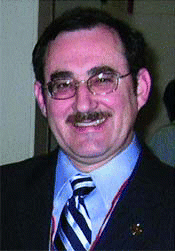Efficacy of Testing
The question then arises: Do all the tests ordered by otolaryngologists really add to improvement in patient diagnosis and treatment?
Explore This Issue
August 2007Rakesh K. (Rick) Chandra, MD, Clinical Assistant Professor at the University of Tennessee College of Medicine in Memphis, discussed currently accepted indications for CT scans, questionable circumstances for ordering imaging services, and research studies regarding CT scan effectiveness in diagnosis.
Most of us will probably agree that CT is not necessary for routine diagnosis and treatment of acute sinusitis, he said, because the CT doesn’t distinguish acute sinusitis from a viral upper respiratory infection. Most of us base our decision to treat with antibiotics, based on symptoms and the time course.
He added that physicians will obtain a CT scan frequently when there are any suspected orbital complications, if there is pending or suspected intracranial complication, if the diagnosis is in doubt, or if the patient fails consecutive courses of appropriate antibiotics. Additionally, a CT would probably be ordered for a suspected neoplasm, chronic rhinosinusitis of more than 12 weeks that has failed maximal medical therapy, polyposis, and suspected allergic fungal sinusitis (AFS) or mucocele.
The when-to-order dilemma, he said, occurs with patients under the following circumstances:
- Patients with suspected chronic rhinosinusitis who have negative CTs. He referred to a 2006 study where only dysosmia and polyps correlated with a positive CT scan.
- Patients without chronic rhinosinusitis often have positive CTs. A New England Journal of Medicine study in 1994 indicated a positive CT for patients with an upper respiratory tract infection; when the CT was repeated two weeks later in about half the patients, 79% had resolved or improved.
- CT does not explain sinus headaches. Dr. Chandra said that multiple studies refute correlation between site of headache/facial pain symptoms and extent or distribution of disease by CT. In addition, CT findings have been correlated with obstruction, discharge, hyposmia, sleep problems, and fatigue.
Questioning whether CT can measure the severity of chronic rhinosinusitis, Dr. Chandra noted a study with 53 patients who had symptoms of chronic rhinosinusitis-27 had a normal CT, whereas 26 had an abnormal CT. Another study found no correlation between Lund-McKay scores and overall SNOT-20 or CSS scores.
Regarding nasal polyposis, it appears that CT can measure response to medical treatment in chronic rhinosinusitis patients without nasal polyposis, but questions arise as to whether improvement is secondary to medical treatment or due to the natural history of the disease process. In addition, Dr. Chandra asked, did serial CTs change the management of who needed prolonged treatment or surgery?

Leave a Reply